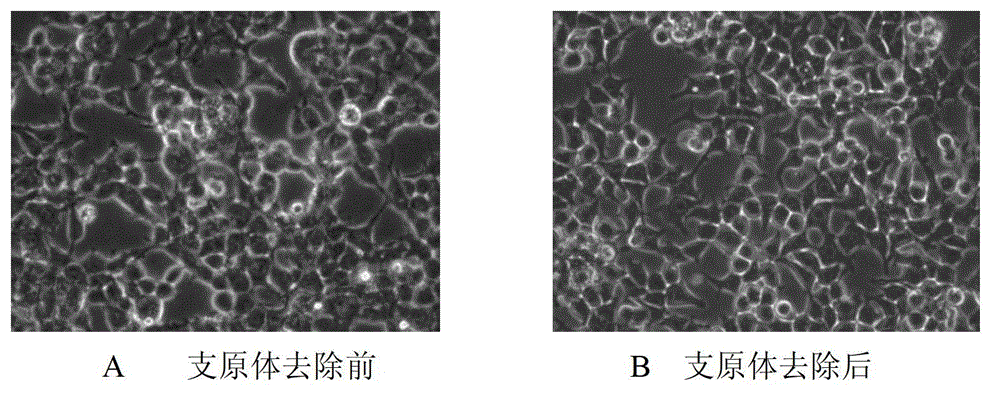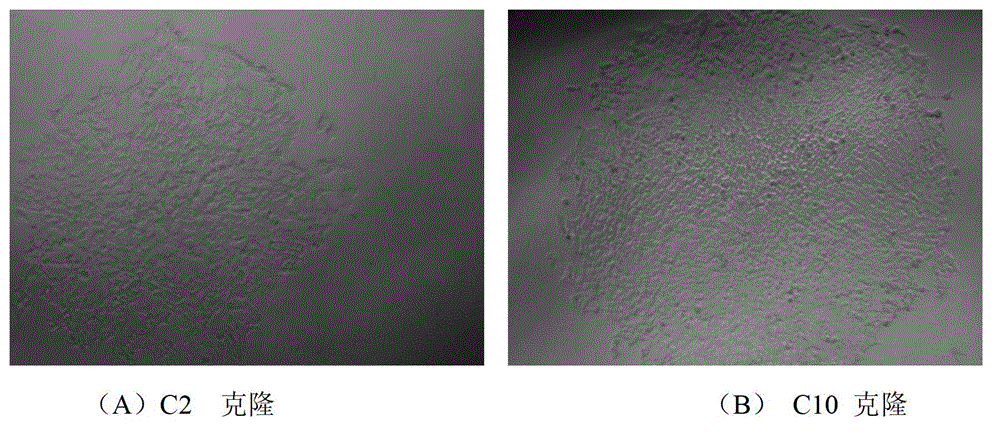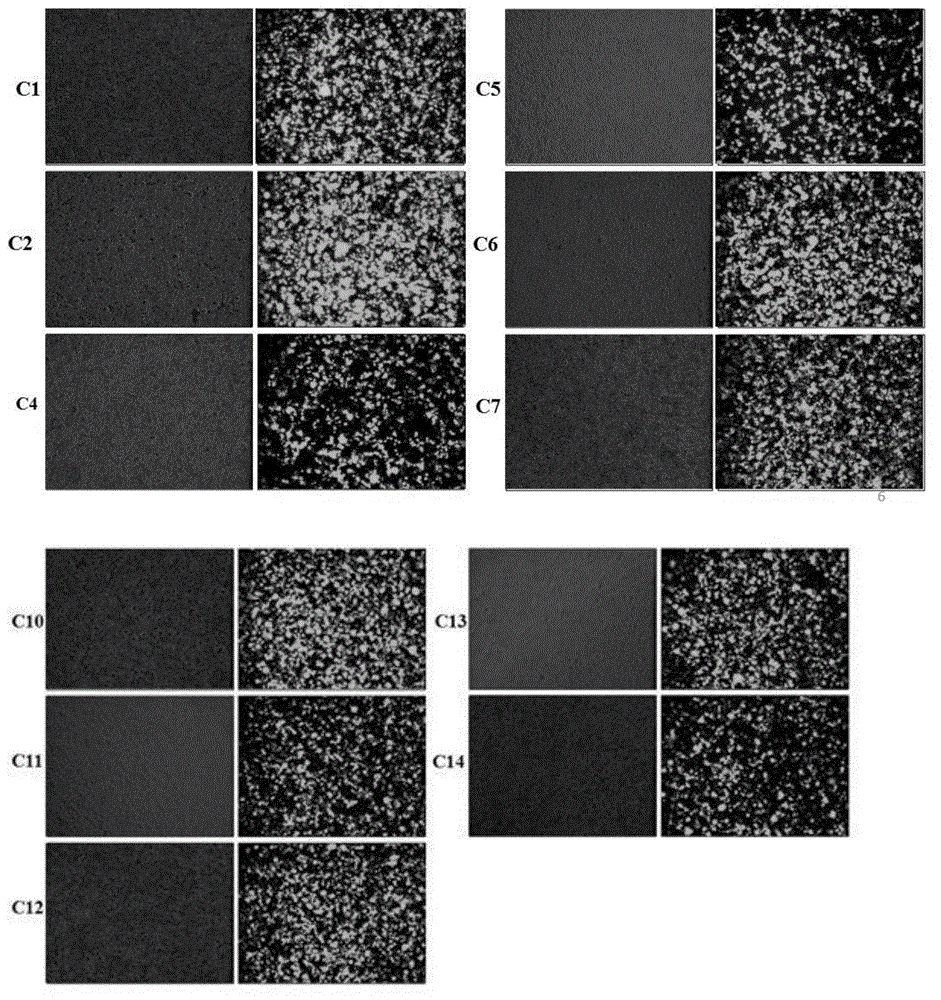Monoclonal cell strain of human embryo kidney cell 293T-C10 as well as preparation and application of monoclonal cell strain
A human embryonic kidney cell, monoclonal technology, applied in the biological field, can solve the problems such as the inability of virus packaging in cells, low poisoning efficiency, bacterial and mycoplasma contamination, etc., achieving low cytotoxicity, stable and reliable poisoning efficiency, obvious effect
- Summary
- Abstract
- Description
- Claims
- Application Information
AI Technical Summary
Problems solved by technology
Method used
Image
Examples
Embodiment 1
[0047] Example 1: Mycoplasma was removed from 293T cells, and the state of cells before and after removal was compared.
[0048] 1. Resuscitated human embryonic kidney cell 293T cells (Institute of Cells, Chinese Academy of Sciences);
[0049] 2. Digest the recovered cells and count 1x10 5 / ml, cultivated in a 6cm dish;
[0050] 3. After adhering to the wall, replace the fresh medium, add mycoplasma removal drugs, such as quinolone derivatives MRA (MP Biomedicals 3050044), stop the drug after 1 week of culture.
[0051] 4. Take pictures to compare the morphology of cells before and after removing mycoplasma, the results are as follows figure 1 As shown, the surface of the cells after removal of mycoplasma is smooth, the cells are full, the refraction is good, and the cell growth is in good condition.
Embodiment 2
[0052] Example 2: 293T cells without mycoplasma contamination were serially diluted to culture in 96-well plates, screening and expansion experiments
[0053] 1. Digest the cells and resuspend the cells obtained in Example 1 with fresh medium.
[0054] 2. After counting, gradually dilute to 1cell / 100μl, add to 96-well plate, 37 degrees, 5% CO 2 to cultivate.
[0055] 3. After the cells adhere to the wall the next day, observe the well with only one living cell under a microscope and mark it with a marker pen.
[0056] 4. After culturing for 3 days, change the medium in the wells marked with a marker pen.
[0057] 5. After 10 days of culture, the monoclonal grows. Further screen the single clone with faster growth rate and better cell uniformity. Eleven monoclonal cell lines labeled C1 / C2 / C4 / C5 / C6 / C7 / C10 / C11 / C12 / C13 / C14 were obtained. The representative clones are C2 and C10 clones. take pictures as figure 2 .
[0058] 6. When the 96 wells grow to 80% density, digest a...
Embodiment 3
[0060] Example 3: Comparing the calcium phosphate-DNA transfection efficiency and toxicity efficiency of different monoclonals, infecting tumor cells at the same time to verify the infection efficiency and observe and compare the cytotoxicity.
[0061] 1. Cultivate different monoclonal cell lines C1-C14 to the logarithmic growth phase, and plant 4x10 cells in each well of a 12-well plate. 5 cells.
[0062] 2. Mix the GFP-labeled control plasmid with the lentiviral original plasmid, and transfect the plasmid with the calcium phosphate-DNA precipitation method; wherein, the control plasmid is the pCDH-CMV-MCS-EF1-copGFP vector, and the packaged virus is named pCDH- GFP; Viral original plasmids are: Pvsv-G (Clontech: 631530), pCMV delta R8.2 (Addgene: 12263).
[0063] The plasmid vectors used for transfection are: pFUGW-H1 (addgene: 25870) plasmid empty vector and pCDH-CMV-MCS-EF1-copGFP (SBI: CD511B-1) plasmid empty vector.
[0064] 3. After 24 hours of transfection, use a flu...
PUM
 Login to View More
Login to View More Abstract
Description
Claims
Application Information
 Login to View More
Login to View More - R&D
- Intellectual Property
- Life Sciences
- Materials
- Tech Scout
- Unparalleled Data Quality
- Higher Quality Content
- 60% Fewer Hallucinations
Browse by: Latest US Patents, China's latest patents, Technical Efficacy Thesaurus, Application Domain, Technology Topic, Popular Technical Reports.
© 2025 PatSnap. All rights reserved.Legal|Privacy policy|Modern Slavery Act Transparency Statement|Sitemap|About US| Contact US: help@patsnap.com



